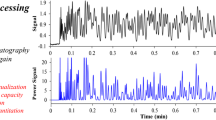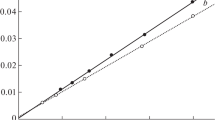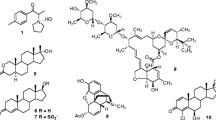Abstract
For incompletely resolved peak pairs, the purity of the chromatographic or fractographic fractions is oftentimes underestimated by the common user. This results in wasted time and effort while trying to achieve higher resolution than needed for the intended use. While a choice regarding acceptable fraction purity is ultimately up to the user and will be dictated by the purpose for which the separation is being conducted, knowledge of fraction purity as a function of chromatographic resolution Rs can help make an informed decision in this regard. To this effect, we revisit here the relationship between peak fraction purity and Rs for pairs of Gaussian peaks, equal pairs ranging in Rs from 0.42 to 1.68 and unequal pairs of various analyte ratios and Rs values. Employing sophisticated yet highly accessible commercial software, we calculate, to a greater precision than previously reported, the purity resultant from midpoint or valley cuts of peak pairs, and also show the improvement gained from performing these cuts at either the maxima of the cumulative peak or at the locations in this peak corresponding to the centers of gravity of the individual component peaks. The methodology employed and equations given are applicable to Rs values other than those investigated here and can be employed to calculate cut-point estimates for virtually any arbitrary desired purity.




Similar content being viewed by others
References
Giddings JC (1991) Unified separation science. Wiley, New York
Poole CF (2003) The essence of chromatography. Elsevier, Amsterdam
Snyder LR, Kirkland JJ, Dolan JW (2010) Introduction to liquid chromatography, 3rd edn. Wiley, Hoboken
Proksch E, Brudener H, Granzner E (1969) J Chromatogr Sci 7:473–483
Westerberg AW (1969) Anal Chem 41:1770–1777
Novák J, Petrović K, Wičar S (1971) J Chromatogr 55:221–229
Foley JP (1987) J Chromatogr 384:301–313
Wu NS, Gu GH (1991) Chromatographia 32:373–378
Meyer VR (1995) J Chromatogr Sci 33:26–33
Gluekauf E (1955) Trans Faraday Soc 51:34–44
Karol PJ (1989) J Chromatogr Sci 27:578–582
Snyder LR (1972) J Chromatogr Sci 10:200–212
Striegel AM, Trainoff SP (2021) Chromatographia 84:37–45
Striegel AM, Yau WW, Kirkland JJ, Bly DD (2009) Modern size-exclusion liquid chromatography, 2nd edn. Wiley, Hoboken
Pitkänen L, Striegel AM (2016) Anal Bioanal Chem 408:4003–4010
Pitkänen L, Montoro Bustos AR, Murphy KE, Winchester MR, Striegel AM (2017) J Chromatogr A 1511:59–67
Funding
There is no funding to report.
Author information
Authors and Affiliations
Corresponding author
Ethics declarations
Conflict of interest
There is no conflict of interest to report.
Ethical Approval
This article does not contain any studies with animals or human participants.
Additional information
Publisher's Note
Springer Nature remains neutral with regard to jurisdictional claims in published maps and institutional affiliations.
Disclaimers: Commercial products are identified to specify the experimental procedure adequately. Such identification does not imply endorsement or recommendation by the National Institute of Standards and Technology, nor does it imply that the materials identified are necessarily the best available for the purpose. The views expressed in this article are those of the authors and do not necessarily reflect the official policy or position of the Henry M. Jackson Foundation for the Advancement of Military Medicine, Inc. nor of the National Institute of Standards and Technology.
Rights and permissions
About this article
Cite this article
Striegel, A.M., Striegel, D.A. Peak Fraction Purity and Chromatographic Resolution: Gaussian Peaks Revisited. Chromatographia 85, 65–72 (2022). https://doi.org/10.1007/s10337-021-04112-0
Received:
Revised:
Accepted:
Published:
Issue Date:
DOI: https://doi.org/10.1007/s10337-021-04112-0




